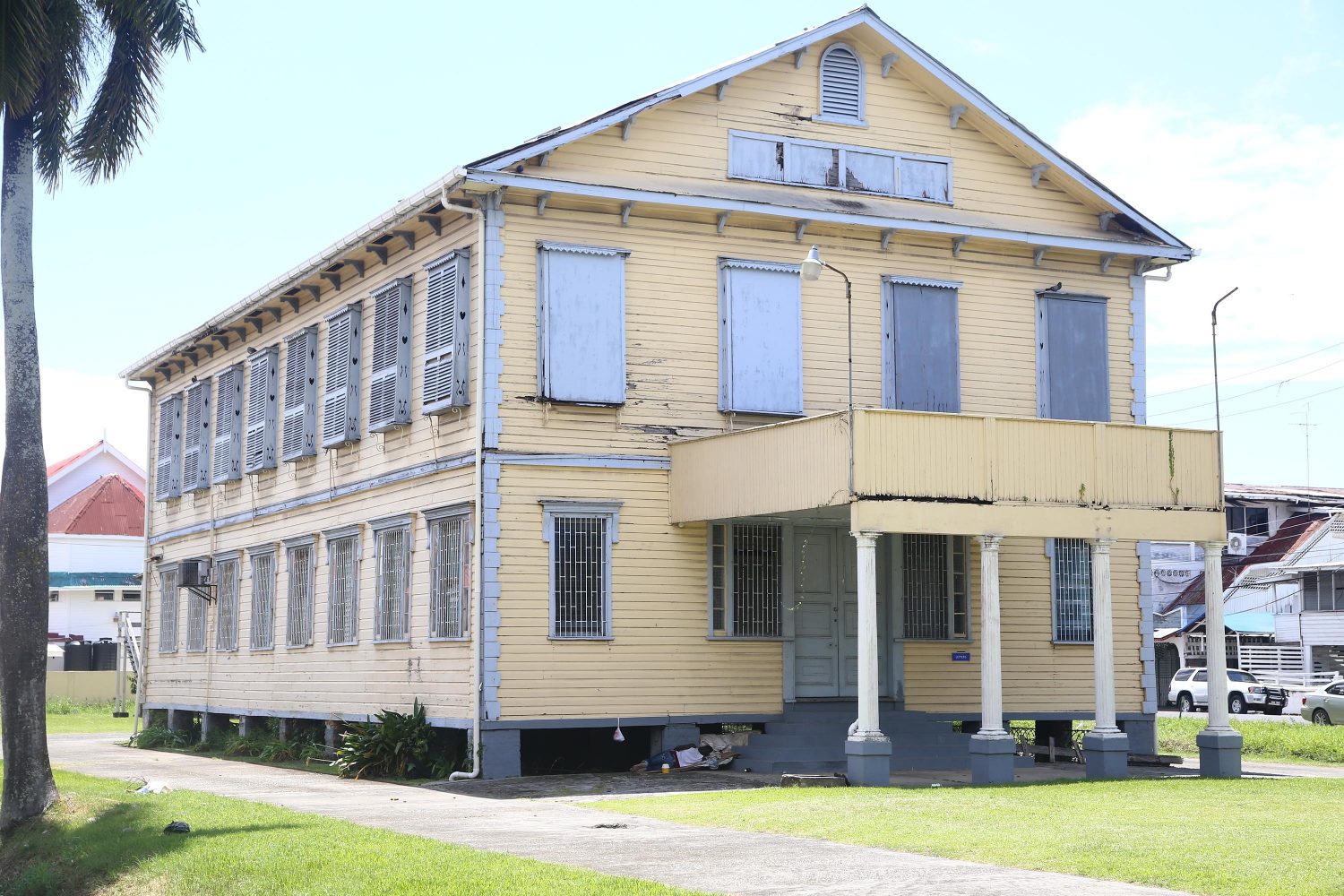The historic Freemasons’ Hall, located at Company Path, between Church Street and North Road, is literally falling apart and efforts are being made to raise funds for the major renovation needed.
The hall, also known as the Principal Masonic Temple, is a meeting place for the Union Lodge, one of Guyana’s oldest fraternities, and other local “Lodges of Ancient Free and Accepted Masons” that comprise the District Grand Lodge of Guyana,
However, there appears to be some disagreement over who actually has responsibility for the maintenance of the building, which is rotting.
The building is constructed of wood except the old fashion clay bricks on which it sits and its concrete stoops.
This newspaper could find nothing to suggest that any major renovation was done on the hall in recent years.
District Grand Master Doodnauth Persaud told Sunday Stabroek recently that the National Trust of Guyana is responsible for the building, since its roof is of a Dutch design, which is very unique, but it does not want to fund needed renovation works for the roof and building.
“They don’t want to give us the money. The building falls under them,” he said. Nonetheless, he added renovation has already started, though he did not indicate who had undertaken the financing of the works or how far along they have progressed. He did, however, say that there will be a fundraising drive to help source the necessary funding to execute the much needed work.
Sunday Stabroek had contacted Persaud after being reliably informed that the building would be torn down and replaced by a modern structure. This caused some amount of concern for persons affiliated with the Lodge and who have some knowledge of the structure’s history as they felt that it should be maintained.
Persaud, however, denied that the structure is to be torn down.
When this newspaper made inquiries at the National Trust, the information provided suggested that the entity has some amount of control over the building. This newspaper was shown a newspaper clipping on early freemasonry in Guyana, a short write up about the structure and what appears to be a building plan, which was all that the National Trust had on file about the structure.
However, Chief Executive Officer of the National Trust Nirvana Persaud, when contacted last Monday, indicated that she was unaware of what was happening with the hall before explaining that the Trust had no legal control over it as it was a listed building and not a gazetted building like Red House.
“It’s not a gazetted property [as far as I am aware]. Only for gazetted property we have a legal say,” she explained.
Persaud said that there are listed buildings which are recognised as historical sites because of their architectural design and cultural significance. She said that the Trust would lobby for such buildings not to be destroyed, given their importance to the city.
“We wouldn’t want it pulled down… because of importance we can intervene…,” she said.
According to the information provided by the Trust, there is some evidence to suggest that a lodge existed on Fort Island in 1780 and it was thought that the Endragt Society was connected in some way with freemasonry. This society, it was stated, purchased the two-storey building on Company Path in 1807.
According to the District Grand Lodge of Guyana website, Union Lodge had its first building, on the Company Path site now occupied by Freemason’s Hall, in January, 1816. “The deeds to this property were granted to Union Lodge on May 10, 1827. However, under British rule in 1929, Governor Sir Frederick Gordon Guggisburg gave a free grant number 6804 of 1929, to the Worshipful Master and brethren of Union Lodge and their successors of the current property and fixtures provided the building and land were used for Masonic proposes only,” it says. “Because of financial difficulties, there were two management agreements for the building first between Union and Concord administered by “Freemasons Hall Building Committee” and secondly between Union, Concord, Mt. Everest, Rorima (sic) and Silent Temple lodges, administered by “Freemasons Management Committee” and then eventually in 1970 District Grand Lodge took over the administration of the building. However, title to the land and buildings still remains with Union Lodge,” it adds.

